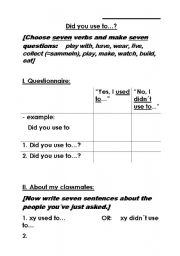
|
Did you use to...?
This is not really a worksheet but a transparency. The instructions for the students are in brackets, they need not be copied. The rest is to be written down in their exercise books. They make questions, go round, ask each other. Below "Yes..." / "No.." they write down the other person�s name.
Level: intermediate
Age: 11-17
Type: worksheet
Downloads: 2
|
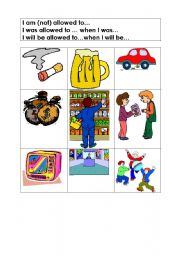
|
allowed to
This is meant to be a transparency and should make pupils speak about what they are / were (not) / will (not) be allowed to do (smoke, drink beer, drive a car, spend money, go shopping, meet friends, watch TV / have their own TV, watch a movie, play with friends).
Level: intermediate
Age: 10-17
Type: worksheet
Downloads: 34
|
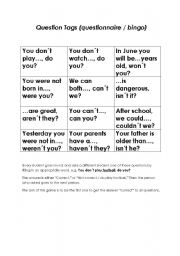
|
question tags
Every student goes round and asks a different (!) student one of these questions by filling in an appropriate word, e.g. You don�t play football, do you?
The aim is to be the first one to get the answer "correct" to all questions.
Level: intermediate
Age: 10-17
Type: worksheet
Downloads: 7
|
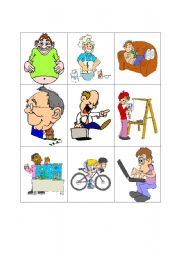
|
Describing people.
This is about describing people.
(I used the same pictures in a worksheet about question tags.)
Level: elementary
Age: 9-17
Type: flash-card
Downloads: 12
|
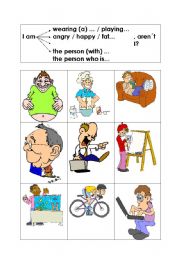
|
Question Tags
One pupil closes his eyes. The teacher points at one of the people on the transparency. Then the pupil opens his eyes and tries to find out his new identity by asking questions with the question tag (..., aren�t I?) at the end.
Level: intermediate
Age: 10-17
Type: worksheet
Downloads: 16
|
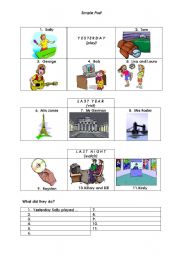
|
Simple Past
Students should practise the simple past with regular verb forms by first looking at the pictures and talking about them. Then they describe the pictures.
Level: intermediate
Age: 12-17
Type: worksheet
Downloads: 9
|